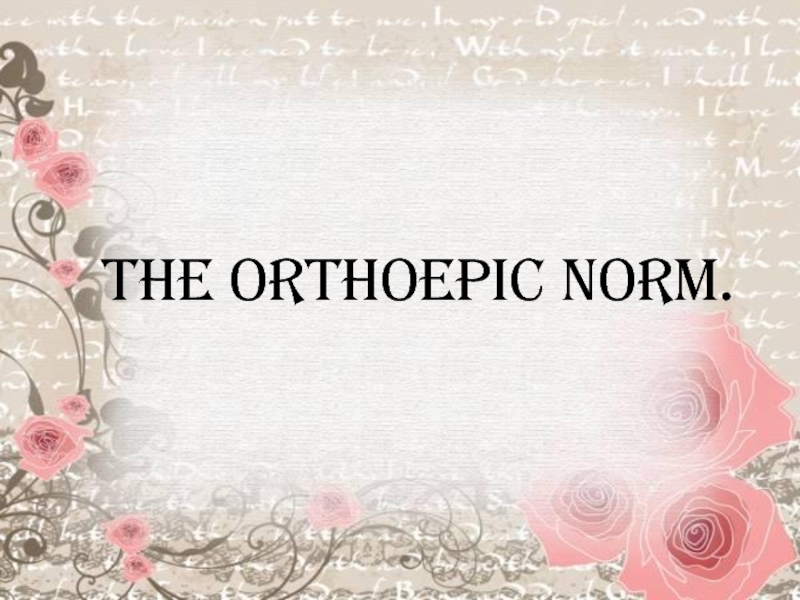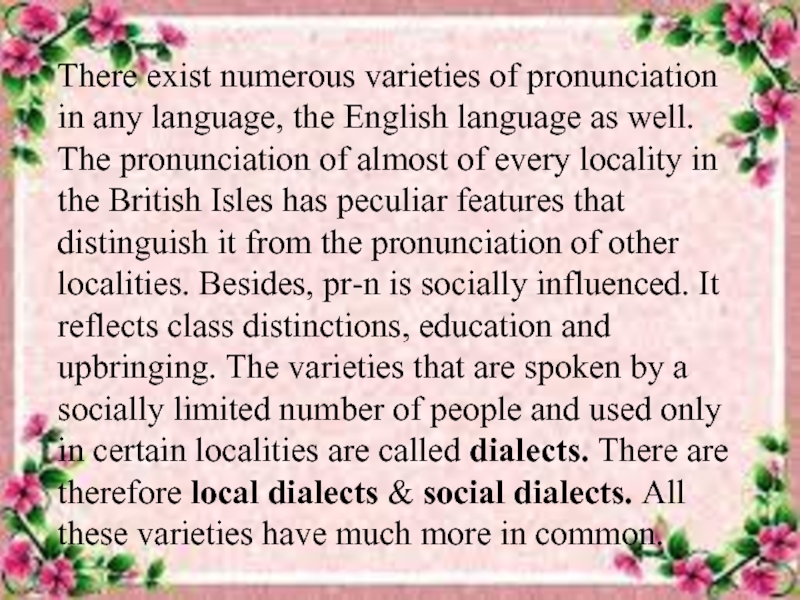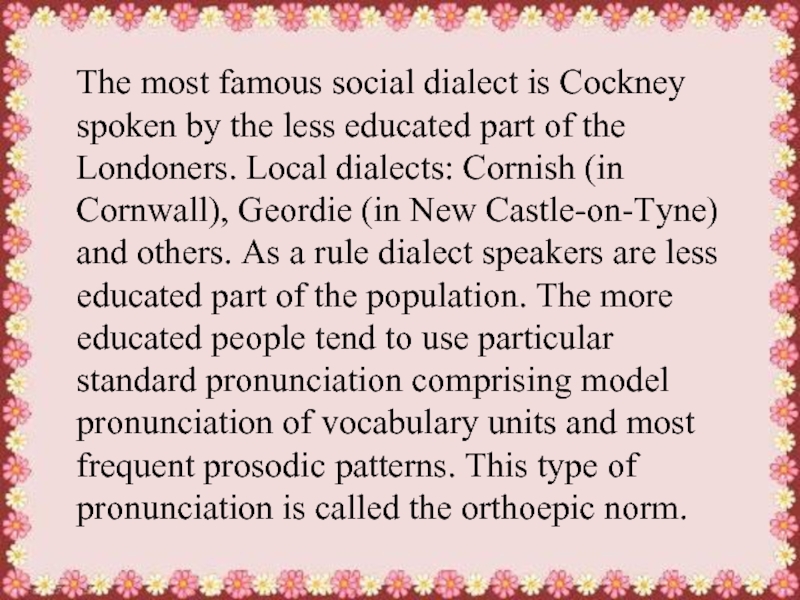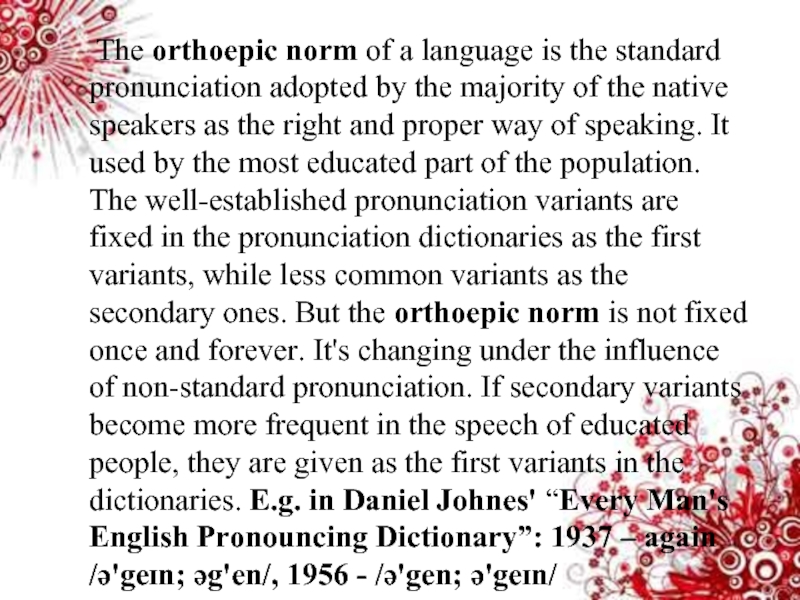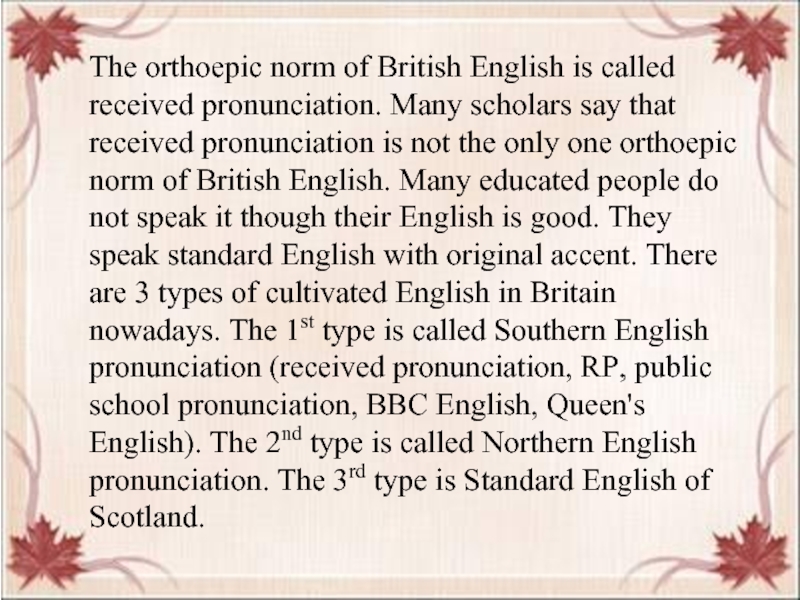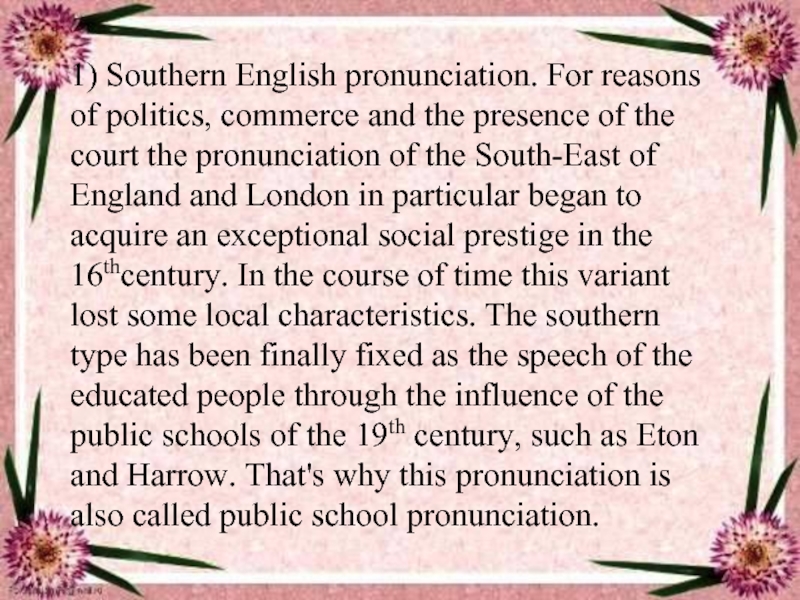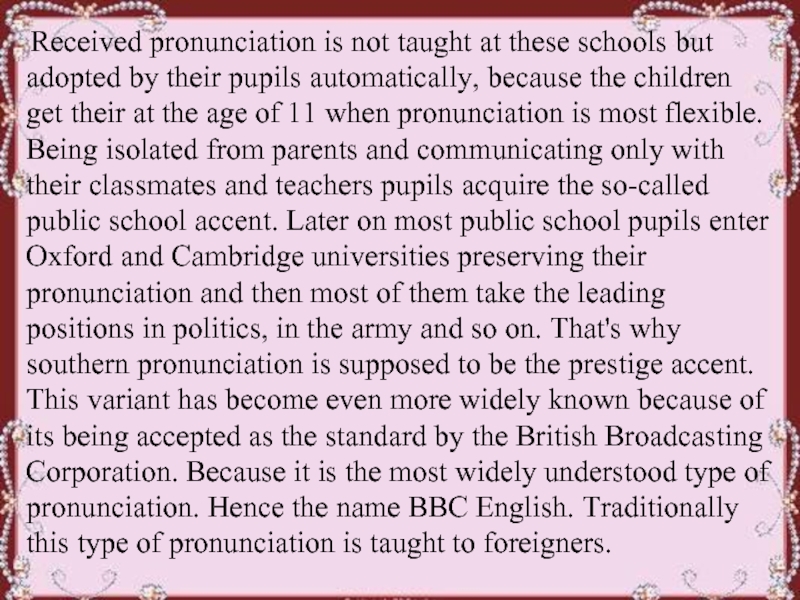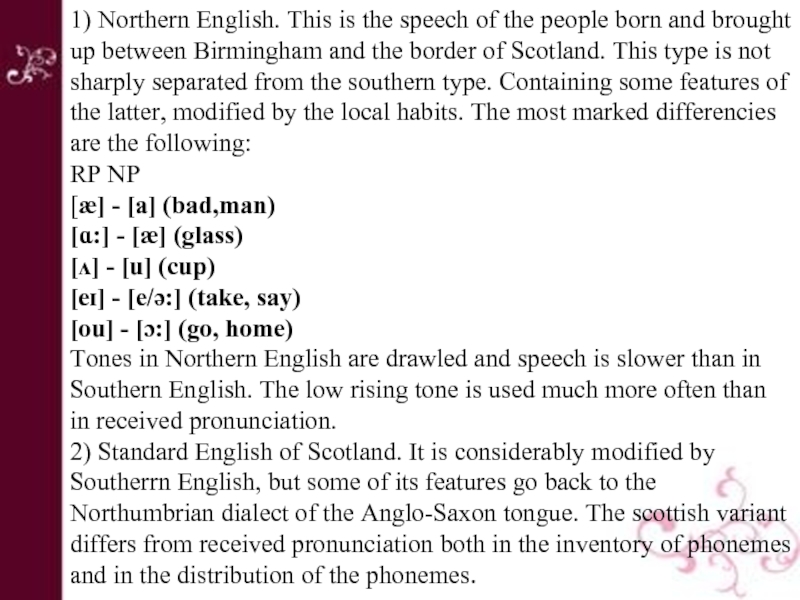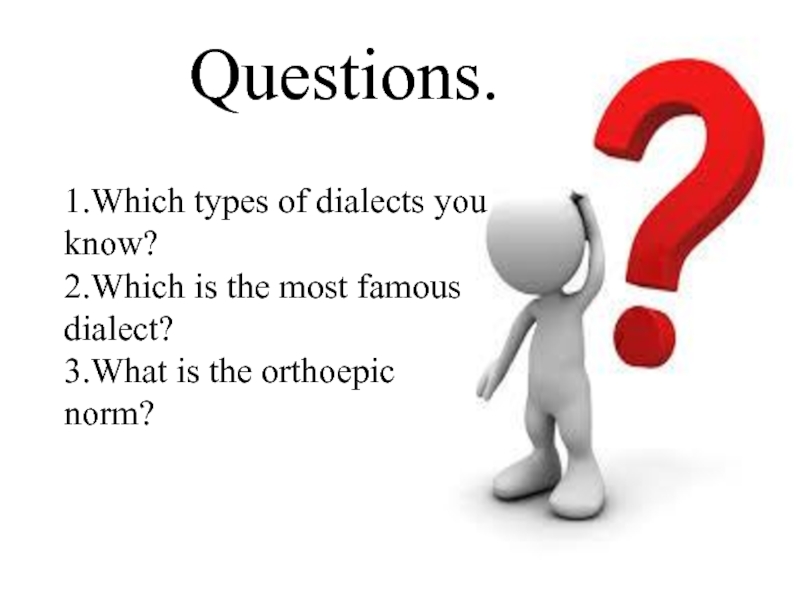- Главная
- Разное
- Дизайн
- Бизнес и предпринимательство
- Аналитика
- Образование
- Развлечения
- Красота и здоровье
- Финансы
- Государство
- Путешествия
- Спорт
- Недвижимость
- Армия
- Графика
- Культурология
- Еда и кулинария
- Лингвистика
- Английский язык
- Астрономия
- Алгебра
- Биология
- География
- Детские презентации
- Информатика
- История
- Литература
- Маркетинг
- Математика
- Медицина
- Менеджмент
- Музыка
- МХК
- Немецкий язык
- ОБЖ
- Обществознание
- Окружающий мир
- Педагогика
- Русский язык
- Технология
- Физика
- Философия
- Химия
- Шаблоны, картинки для презентаций
- Экология
- Экономика
- Юриспруденция
The orthoepic norm презентация
Содержание
- 1. The orthoepic norm
- 2. There exist numerous varieties of pronunciation
- 3. The most famous social dialect is
- 4. The orthoepic norm of a language is the
- 5. The orthoepic norm of British English
- 6. 1) Southern English pronunciation. For reasons
- 7. Received pronunciation is not taught at
- 8. 1) Northern English. This is the
- 9. Questions. 1.Which types of dialects
Слайд 2
There exist numerous varieties of pronunciation in any language, the English
language as well. The pronunciation of almost of every locality in the British Isles has peculiar features that distinguish it from the pronunciation of other localities. Besides, pr-n is socially influenced. It reflects class distinctions, education and upbringing. The varieties that are spoken by a socially limited number of people and used only in certain localities are called dialects. There are therefore local dialects & social dialects. All these varieties have much more in common.
Слайд 3
The most famous social dialect is Cockney spoken by the less
educated part of the Londoners. Local dialects: Cornish (in Cornwall), Geordie (in New Castle-on-Tyne) and others. As a rule dialect speakers are less educated part of the population. The more educated people tend to use particular standard pronunciation comprising model pronunciation of vocabulary units and most frequent prosodic patterns. This type of pronunciation is called the orthoepic norm.
Слайд 4
The orthoepic norm of a language is the standard pronunciation adopted by the
majority of the native speakers as the right and proper way of speaking. It used by the most educated part of the population. The well-established pronunciation variants are fixed in the pronunciation dictionaries as the first variants, while less common variants as the secondary ones. But the orthoepic norm is not fixed once and forever. It's changing under the influence of non-standard pronunciation. If secondary variants become more frequent in the speech of educated people, they are given as the first variants in the dictionaries. E.g. in Daniel Johnes' “Every Man's English Pronouncing Dictionary”: 1937 – again /ə'geɪn; əg'en/, 1956 - /ə'gen; ə'geɪn/
Слайд 5
The orthoepic norm of British English is called received pronunciation. Many
scholars say that received pronunciation is not the only one orthoepic norm of British English. Many educated people do not speak it though their English is good. They speak standard English with original accent. There are 3 types of cultivated English in Britain nowadays. The 1st type is called Southern English pronunciation (received pronunciation, RP, public school pronunciation, BBC English, Queen's English). The 2nd type is called Northern English pronunciation. The 3rd type is Standard English of Scotland.
Слайд 6
1) Southern English pronunciation. For reasons of politics, commerce and the
presence of the court the pronunciation of the South-East of England and London in particular began to acquire an exceptional social prestige in the 16thcentury. In the course of time this variant lost some local characteristics. The southern type has been finally fixed as the speech of the educated people through the influence of the public schools of the 19th century, such as Eton and Harrow. That's why this pronunciation is also called public school pronunciation.
Слайд 7
Received pronunciation is not taught at these schools but adopted by
their pupils automatically, because the children get their at the age of 11 when pronunciation is most flexible. Being isolated from parents and communicating only with their classmates and teachers pupils acquire the so-called public school accent. Later on most public school pupils enter Oxford and Cambridge universities preserving their pronunciation and then most of them take the leading positions in politics, in the army and so on. That's why southern pronunciation is supposed to be the prestige accent. This variant has become even more widely known because of its being accepted as the standard by the British Broadcasting Corporation. Because it is the most widely understood type of pronunciation. Hence the name BBC English. Traditionally this type of pronunciation is taught to foreigners.
Слайд 8
1) Northern English. This is the speech of the people born
and brought up between Birmingham and the border of Scotland. This type is not sharply separated from the southern type. Containing some features of the latter, modified by the local habits. The most marked differencies are the following:
RP NP
[æ] - [a] (bad,man)
[ɑ:] - [æ] (glass)
[ʌ] - [u] (cup)
[eɪ] - [e/ə:] (take, say)
[ou] - [ɔ:] (go, home)
Tones in Northern English are drawled and speech is slower than in Southern English. The low rising tone is used much more often than in received pronunciation.
2) Standard English of Scotland. It is considerably modified by Southerrn English, but some of its features go back to the Northumbrian dialect of the Anglo-Saxon tongue. The scottish variant differs from received pronunciation both in the inventory of phonemes and in the distribution of the phonemes.
RP NP
[æ] - [a] (bad,man)
[ɑ:] - [æ] (glass)
[ʌ] - [u] (cup)
[eɪ] - [e/ə:] (take, say)
[ou] - [ɔ:] (go, home)
Tones in Northern English are drawled and speech is slower than in Southern English. The low rising tone is used much more often than in received pronunciation.
2) Standard English of Scotland. It is considerably modified by Southerrn English, but some of its features go back to the Northumbrian dialect of the Anglo-Saxon tongue. The scottish variant differs from received pronunciation both in the inventory of phonemes and in the distribution of the phonemes.
Слайд 9Questions.
1.Which types of dialects you know?
2.Which is the most famous dialect?
3.What
is the orthoepic norm?
